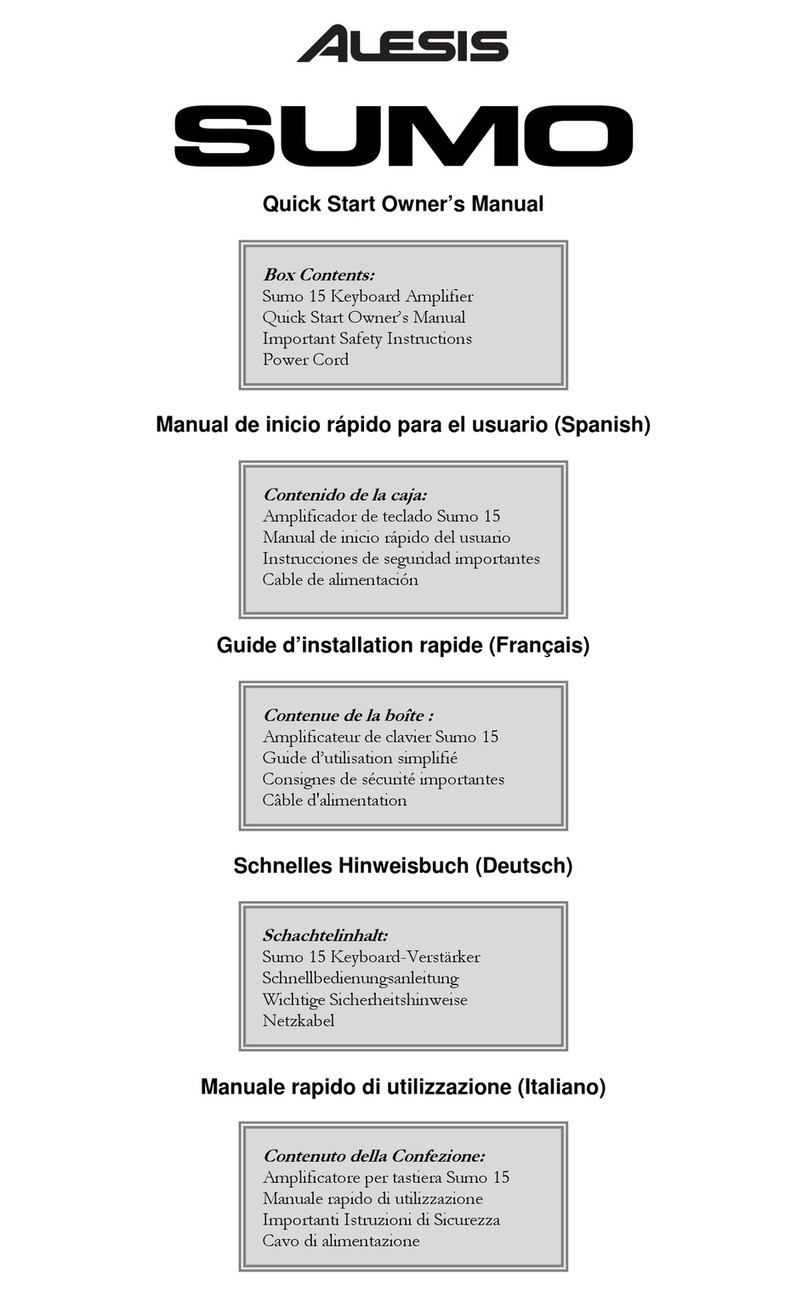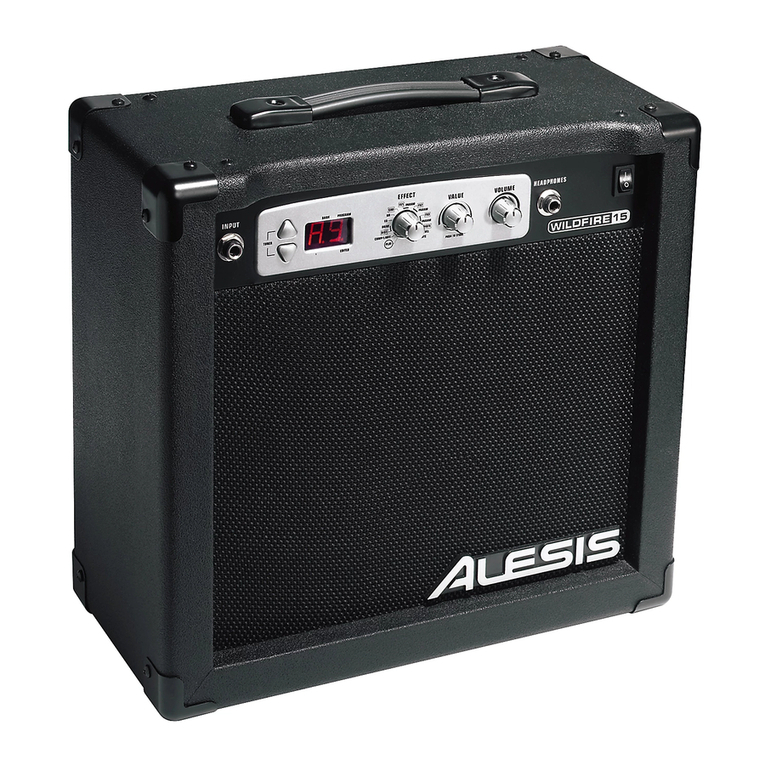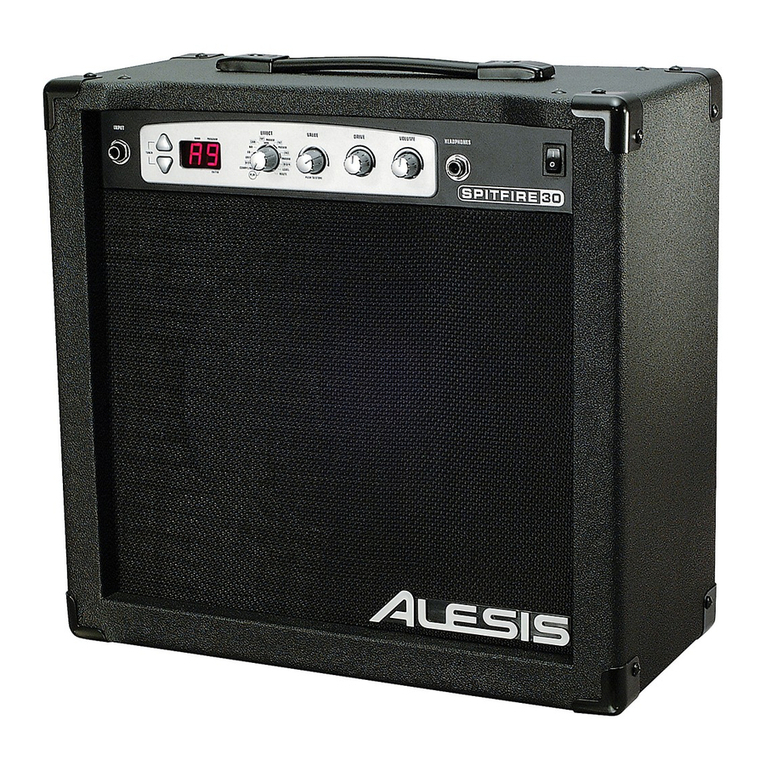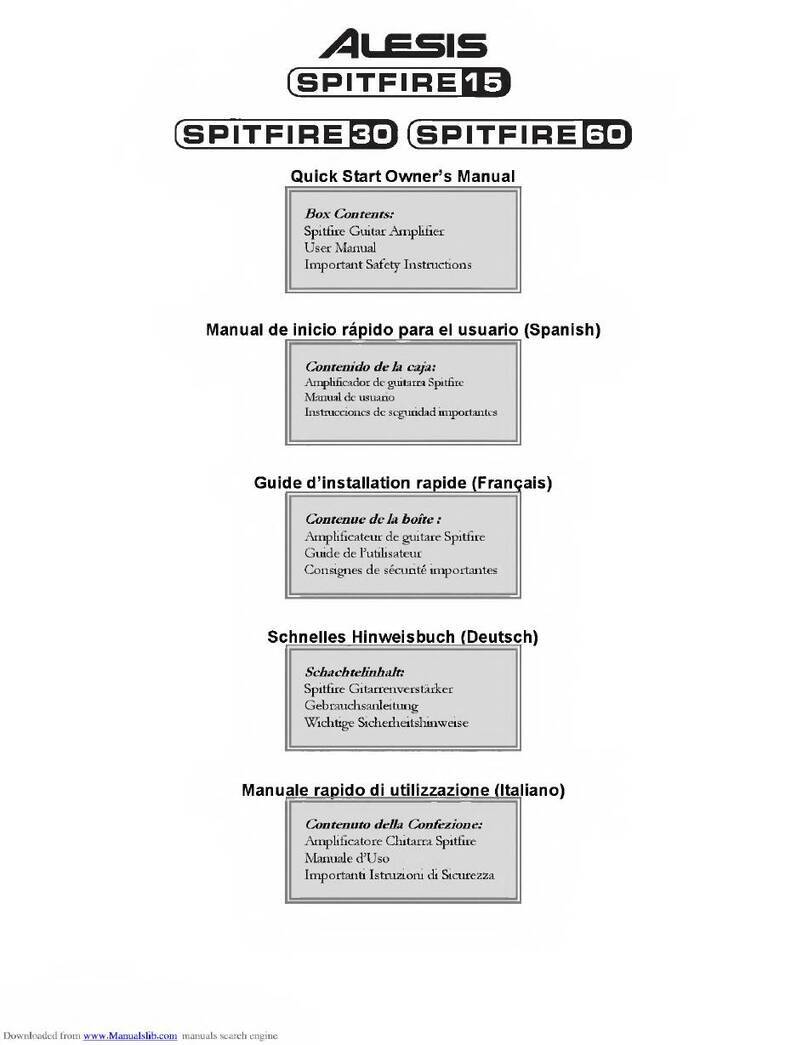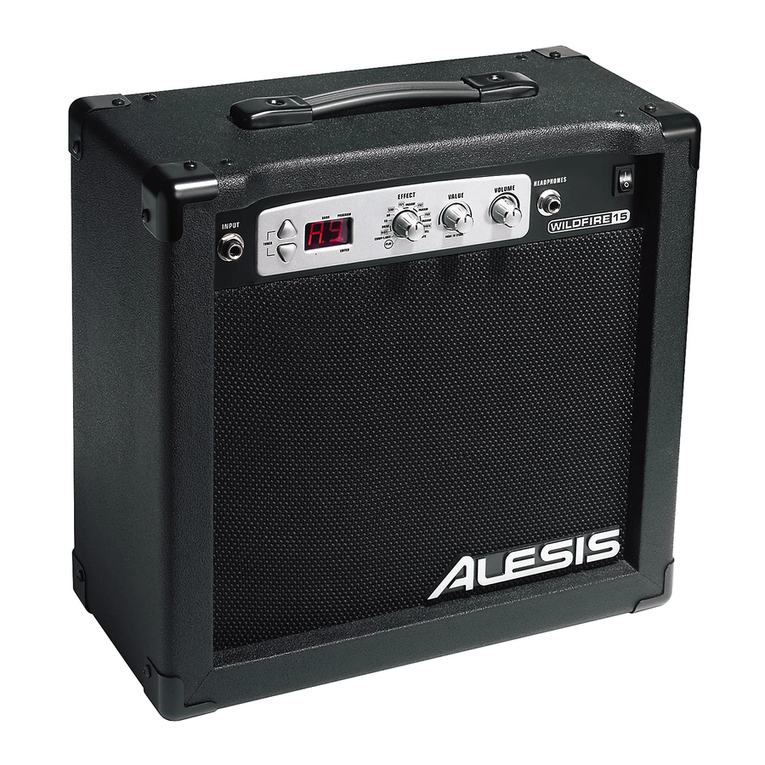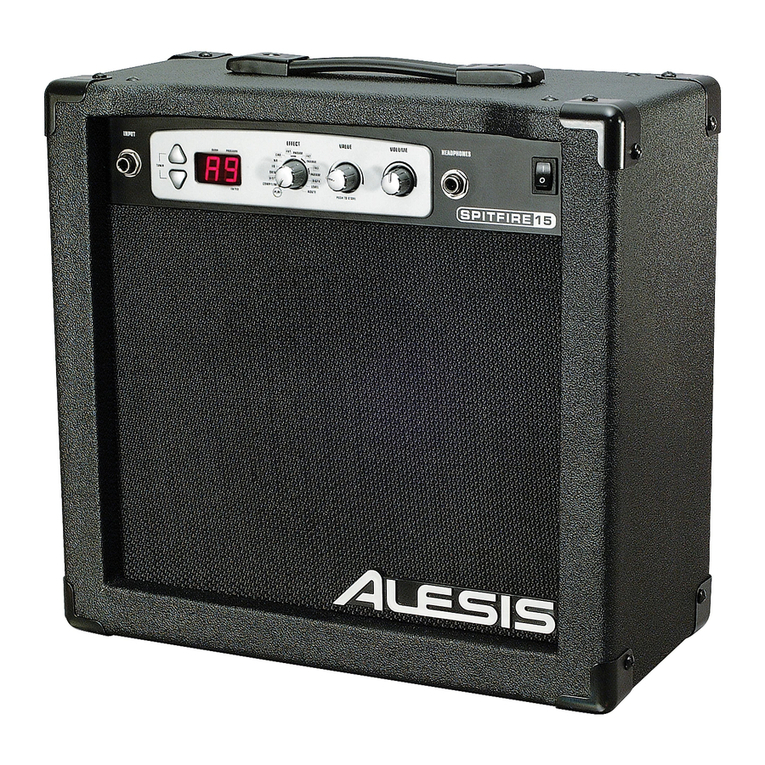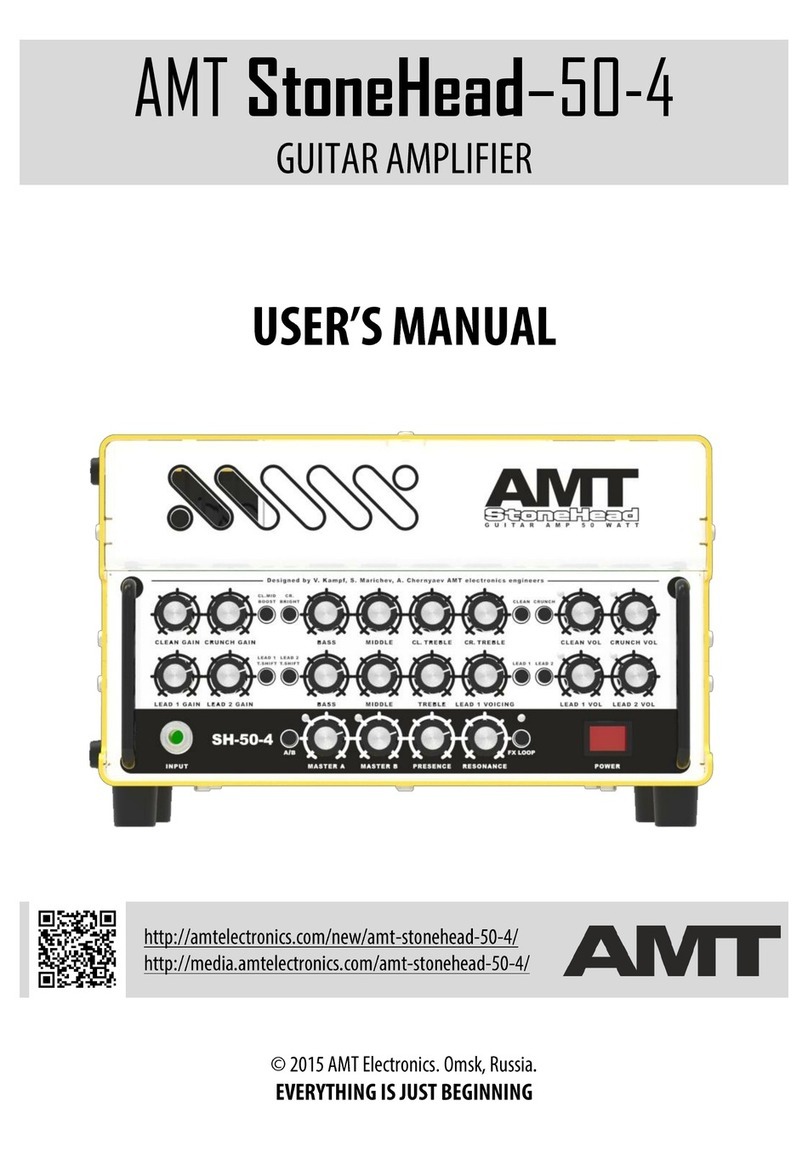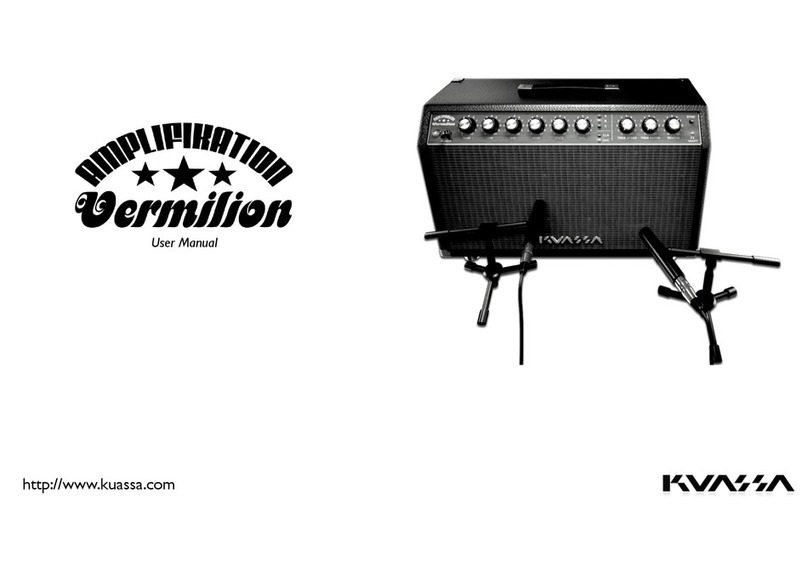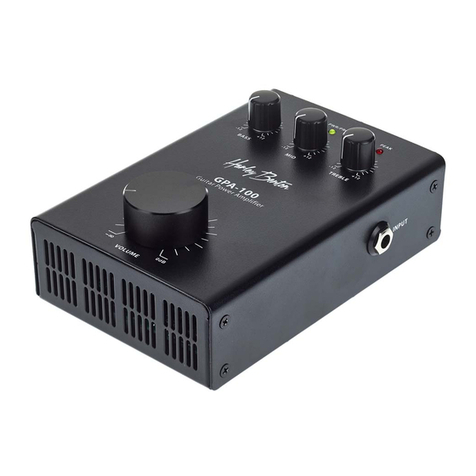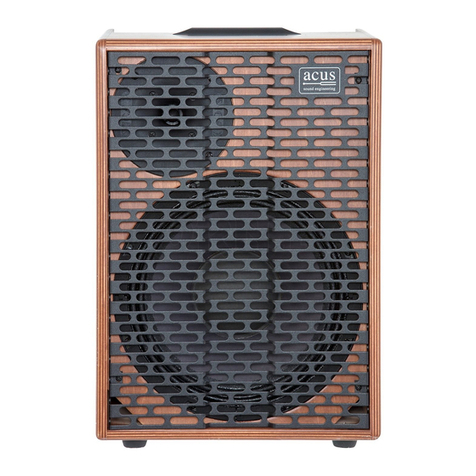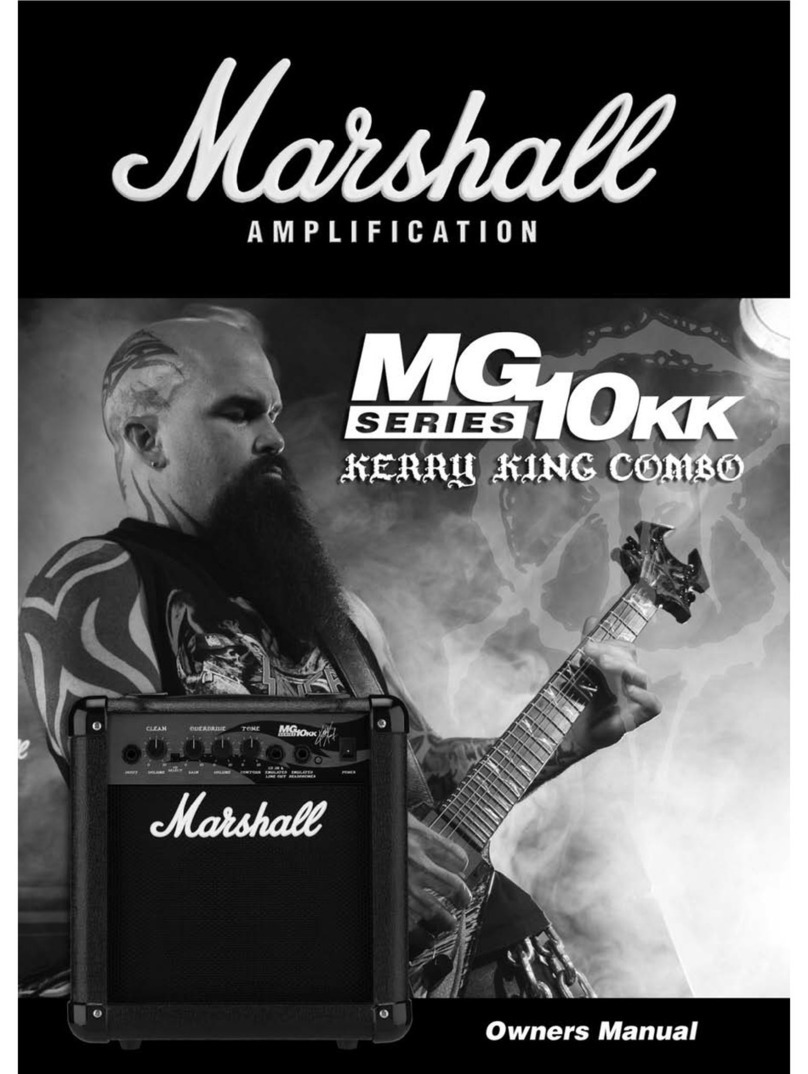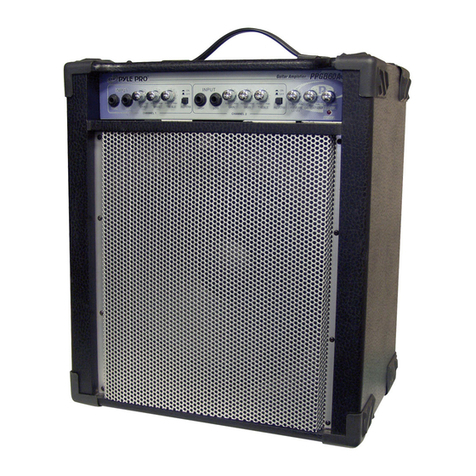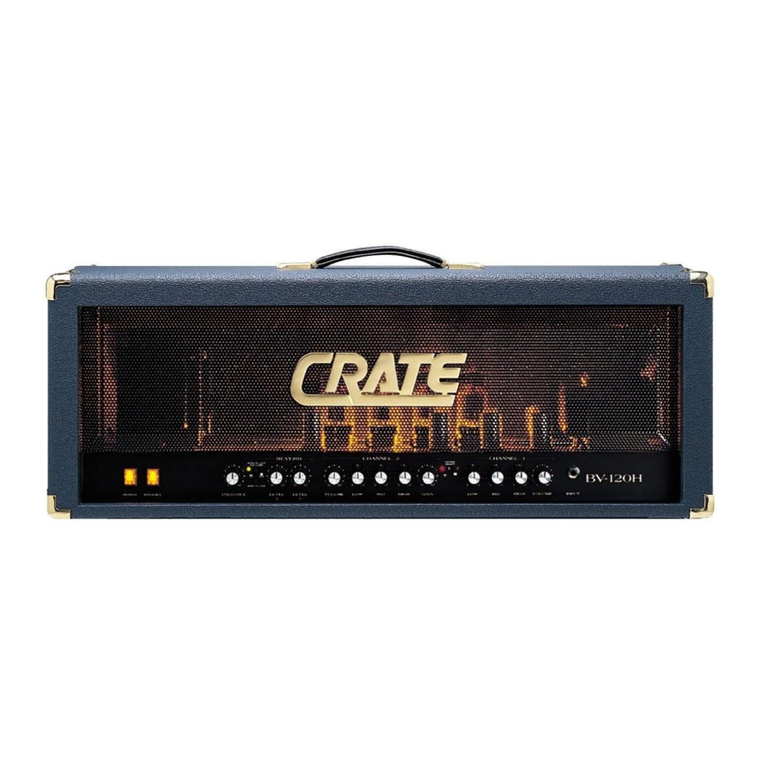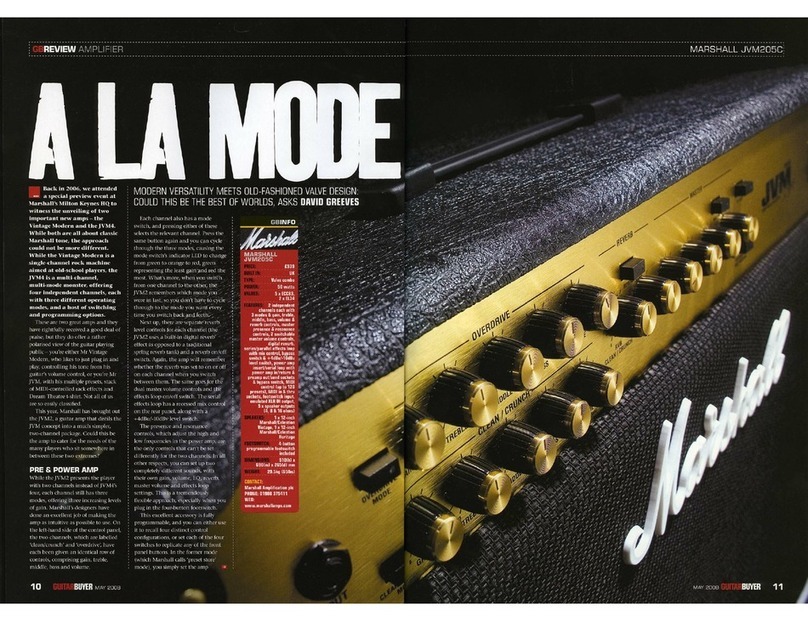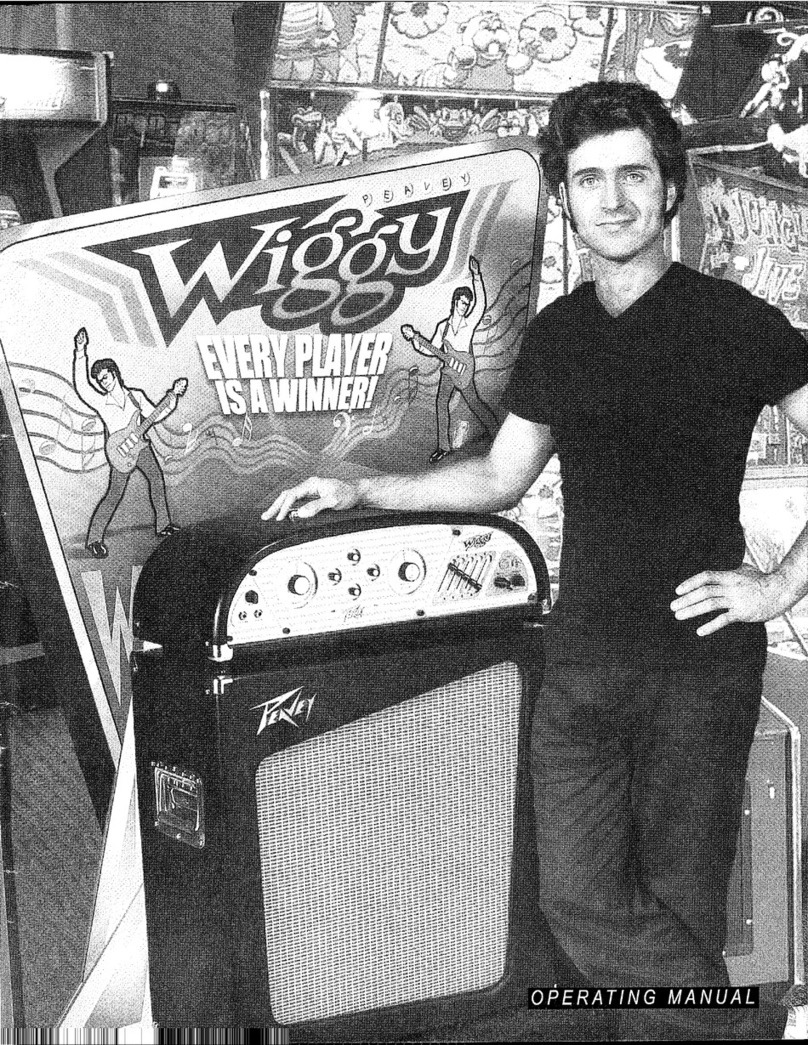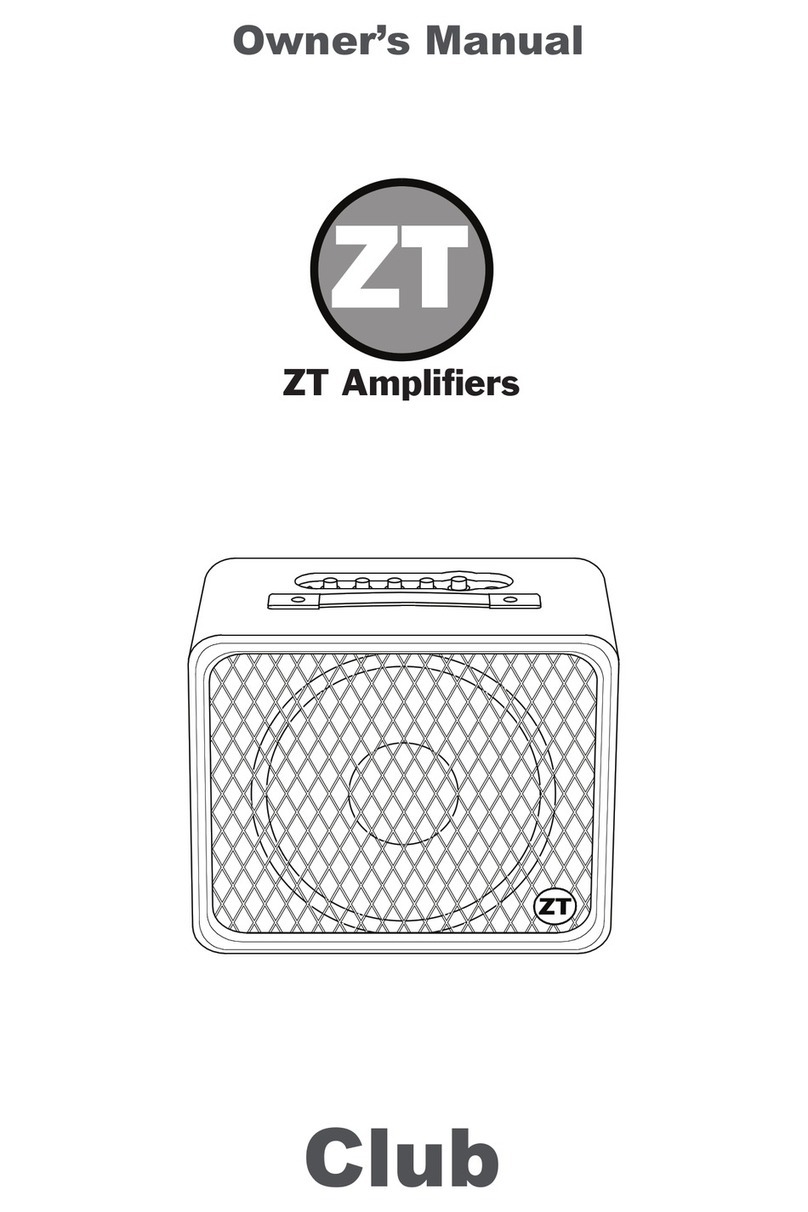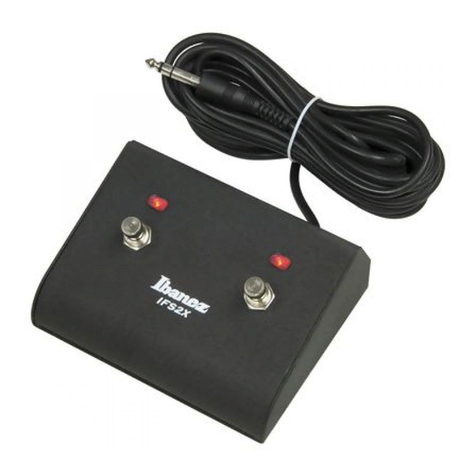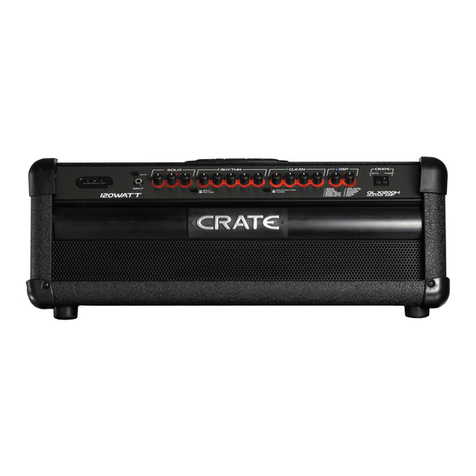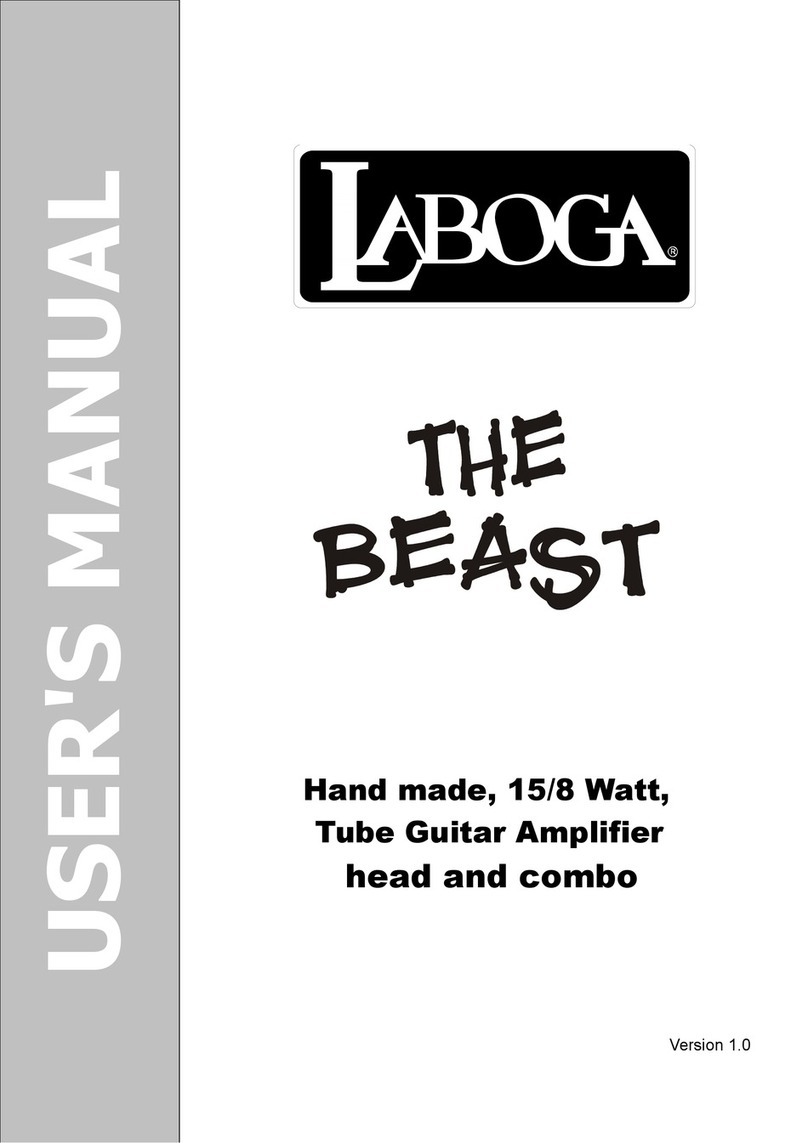8
Storing effects programs
After you’ve created a configuration that you like, you can store it for future recall. To store
your changes, press the VALUE knob and then turn the knob to select a store location.
Press the VALUE knob again to store the program.
Copying effects programs from one location to another
Copying programs is easy. Just call up the program that you want to copy. Then, press the
VALUE knob, twist it until you find the location where you want to store your copy, and
press VALUE again to store the program in its new location.
Restoring factory defaults for the effect settings
Once you have saved changes to a preset program, you can still recall the original settings.
To enter the RESTORE FACTORY PRESETS mode, simply hold down the VALUE knob
as you turn the unit on and then select the program to be restored (or AL for all programs).
Press the VALUE knob to confirm your selection. The display will blink rapidly several
times to indicate the restore was successful. Any program changes you have made will be
lost, so you might want to copy the program to another location first.
To exit the RESTORE FACTORY PRESETS mode, just turn the EFFECTS knob. You
can also turn the Coolfire off and then on again, without holding down any knobs or
buttons, to exit the RESTORE FACTORY PRESETS mode.
Deferred program change
In normal operation, the Coolfire switches immediately to the program you select. However,
in some situations — especially when playing live — you may want the ability to scroll
through program numbers while remaining in the current program setting. For example, if
you’ve got a clean and chorusy rhythm sound stored in program A3, and you want to switch
next to a bright lead sound stored in program C5, you don’t want to have to hear all the
programs in between. In these cases, use the Coolfire’s Deferred Program Change mode.
While turning on the Coolfire, hold down either one of the Program Up or Program
Down buttons. Letters will scroll by on the display, spelling the word “deferred.”
In this mode, you can scroll through program numbers without having the program change
each time. When you arrive at a program you want to use, press the Program Up and
Program Down buttons or both pedals at the same time in order to switch to that
program.
To exit Deferred Program Change mode, turn the Coolfire off, and then turn it back on
again without holding down any buttons.

